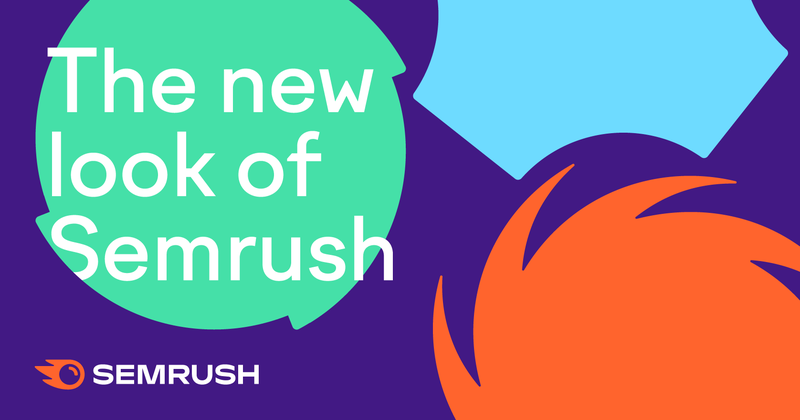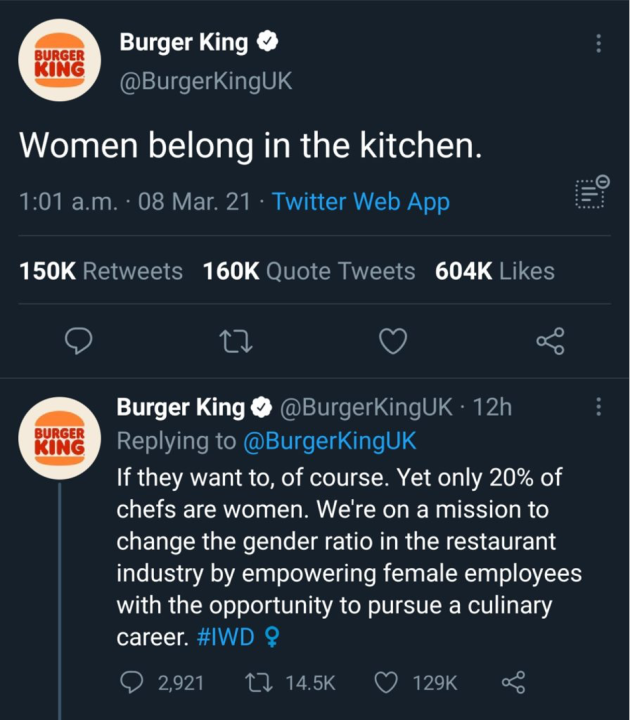One of a brand’s greatest gifts is its ability to communicate with its prospects and customers through social communities.
These goldmines of customer sentiment and potential product or service positioning can provide every brand with a wealth of information.
However, cultivating those communities and building the authenticity to engage with your customers takes time and effort.
This post will not tell you, “Here’s exactly how to do it,” because every brand will have a different voice that it needs to leverage as well as different needs for its community.
However, we will explore a framework you can leverage for your brand so that your conversations with customers and prospects are meaningful.
Here are the main areas we will discuss in this article:
- Value and tone – how to determine which ones are right for you.
- Translating your message across channels and carrying your customers with you.
- Owning whether engagement should be paid or organic.
A final note before we dive in: this is not going to be a criticism or praise of any one particular channel. We intend to keep this as agnostic as possible, acknowledging that some brands will be more aligned with some channels than others.
This can be related to creative bandwidth, i.e., how much time you have to post and engage with a channel. It could also be related to whether you have the means to create video. There are a number of different criteria.
Just know that whatever you decide to engage with, you do need to be consistent.
Value & Tone
A brand’s values come down to who it is at its core. Some brands lean toward transparency and sharing all of the ins and outs of how they function. This can include what it’s doing with its team and what the product/service roadmap looks like.
Others will focus far more on doing well by doing good, highlighting customer engagement in the community versus just what they are working on themselves.
There is no right or wrong answer to this. You need to make sure that you know what your brand’s beating heart is and how the message you’re sending ties back to that.
Coming up with your values is not something you should undertake lightly. Additionally, your team needs to agree on and comply with them.
If giving in the community is a core value, your team members shouldn’t be caught posting things that make light of others’ suffering.
Conversely, if part of your values relate to certain tech advancements, calling out those tech advancements in a negative light could be counterproductive.
This doesn’t mean that you can’t change your opinion and have reasons why your opinion shifts, but consistent communication is needed to reinforce the new value position.
 Image from Semrush, April 2024
Image from Semrush, April 2024One example is Semrush. Semrush used to have a different brand aesthetic, and there were questions about how to pronounce its brand name.
The company settled the debate once and for all with a very clear-cut statement. In doing so, it actually ruffled a few feathers because the community didn’t like being told they were wrong.
On the other hand, Semrush ensured that its branding would be consistent moving forward. This was particularly useful as it prepared for its IPO.
 Screenshot from Twitter, April 2024
Screenshot from Twitter, April 2024Burger King ran an ill-fated X (Twitter) campaign saying women belong in the kitchen.
Now, most of us would know it’s common sense that this could only have ended badly. However, the campaign intended to highlight the shortage of female chefs leading kitchen brigades and earning top dollar compared to their male counterparts.
The brand redeemed itself somewhat instead of representing a true failure because it acknowledged the mistake and then provided detailed information about what it had been trying to do.
So, while Burger King did fall down publicly as a brand, it paved the way for more attention to be shown to the cause.
Thank you to Purna Virji for highlighting this one and lots of other great examples in her book, “High Impact Marketing.” You can read chapter one of her book here.
Both of these cases provide a useful framework to consider how you want your values and tone to come across to your customers:
- Are you comfortable poking fun at your customers and yourselves, or do you feel the need to be serious?
- How quickly can you respond to customer sentiment shifts, and how much can you let that influence your risk tolerance and risk aversion?
- How much should you be tied to public events versus how often should you create events based on industry, product, or service innovations?
The answers to all of these questions will help you build a framework that you can then take to each channel.
You are prepared to build a community, but these communities will need moderation, so you should only engage in a channel that you are prepared for.
Staff will go through each major channel in a moment, but it is important to know that no matter how many you choose, successes tend to go unnoticed. Failures tend to be remembered indefinitely, and the greatest failure is not owning your brand.
So, even if you aren’t prepared to engage with a channel, you should still at least claim your profile.
Translating Messages Across Channels
When people talk about social media, they are typically referring to Facebook, Instagram, Reddit, TikTok, LinkedIn, X (Twitter), Snapchat, Pinterest, and Quora.
However, how you actually engage with each of these channels or any additional ones that pop up, including login-based communities like Discord, Slack, and Tumblr, will all depend on how well-equipped your team is to engage with the pace of each channel.
We’re going to break down each channel based on its pace, general tone, and creative flexibility.
When engaging with these communities, it’s important to note that you should claim your profile across all channels but only be active where you intend to be consistent and know your customers and prospects are or could be enticed to engage.
- Tone: Generally casual and personal, but can vary depending on the content shared.
- Pace: Moderate pace, with a mix of real-time updates and more evergreen content. Brands typically post 1-2 times per day to maintain visibility in the algorithm.
- Creative Flexibility: Offers various content formats like text posts, images, videos, live streams, and Stories. Moderation includes adherence to community standards, which restricts certain types of content.
- Community Management Tools: Provides features like Groups, Pages, and messaging for community management. Also offers insights and analytics for Page owners.
- Tone: Visual and aesthetic-focused, often aspirational or inspirational.
- Pace: Fast-paced, with a focus on real-time updates and Stories. Brands typically post at least once per day to maintain visibility.
- Creative Flexibility: This category primarily includes visual content (photos and videos), with features like filters, stickers, and editing tools for creative expression. Moderation includes content guidelines and community standards enforcement.
- Community Management Tools: Offers business profiles, analytics, and messaging for community management. Also, features like hashtags and tagging help in content discovery.
- Tone: While mostly professional and formal, geared towards career development and networking, there is an appetite for B2B humor/memes.
- Pace: The pace is generally slower, with more thoughtful and curated content. Brands typically post 2-5 times per week to maintain visibility. However, individuals post daily to maintain their presence in the feed.
- Creative Flexibility: Primarily text-based posts, articles, and professional updates, with multimedia options. Moderation includes professional standards and restrictions on promotional content.
- Community Management Tools: Provides tools for personal and business profiles, including messaging, groups, and analytics. Also offers job postings and networking features.
TikTok:
- Tone: Fun, entertaining, and often light-hearted or humorous.
- Pace: Very fast-paced, with short-form videos designed for quick consumption. Brands typically post multiple times per day to maintain visibility.
- Creative Flexibility: This is highly flexible, with a focus on short videos augmented with effects, filters, and music. Moderation includes enforcing community guidelines and restricting certain content types.
- Community Management Tools: Offers features like Duets, reactions, comments, and hashtags for engagement. Also provides analytics for creators.
X (Twitter)
- Tone: Conversational, often informal, and concise due to character limit.
- Pace: Fast-paced, with real-time updates and trending topics. Brands typically post multiple times per day to maintain visibility.
- Creative Flexibility: Limited by character count but supports text, images, videos, and GIFs. Moderation includes adherence to Twitter rules and restrictions on sensitive content.
- Community Management Tools: Features like retweets, replies, hashtags, and lists facilitate engagement and community building. Analytics and Twitter chats are also useful for community management.
- Tone: Diverse, depending on the subreddit, but generally informal and community-driven.
- Pace: This can vary, but it is often a mix of real-time discussions and slower-paced threads. Brands typically engage regularly but avoid spamming to maintain credibility.
- Creative Flexibility: Supports various content types including text, images, links, and videos. Moderation includes subreddit-specific rules, enforced by moderators.
- Community Management Tools: Moderation tools like banning, removing posts, and community guidelines enforcement. Subreddit creation and management, along with voting and commenting systems, are essential for community engagement.
Quora
- Tone: Informative and knowledge-focused, with an emphasis on sharing expertise.
- Pace: Generally slower-paced, with longer-form questions and answers. Brands typically engage by answering relevant questions and participating in discussions.
- Creative Flexibility: Primarily text-based, with options for including images and links. Image size: Varies based on Quora’s formatting. Moderation includes adherence to Quora’s policies and guidelines.
- Community Management Tools: Moderation tools for questions, answers, and comments. Features like following topics, upvoting, and following users facilitate community interaction.
Discord
- Tone: Varied depending on the server, but often casual and conversational.
- Pace: Can range from slow-paced discussions to real-time chats and events. Brands typically maintain active presence but avoid overwhelming channels.
- Creative Flexibility: Supports text, voice, and video communication, along with customizable server settings and bots for additional functionality. Moderation includes server-specific rules enforced by administrators.
- Community Management Tools: Extensive moderation tools for roles, channels, permissions, and content moderation. Features like voice channels, emojis, and reaction roles enhance community engagement.
Slack
- Tone: Professional and work-focused, though it can be casual within specific channels or teams.
- Pace: Typically moderate-paced, with real-time communication within teams. Brands typically engage regularly but avoid excessive messaging to maintain productivity.
- Creative Flexibility: Primarily text-based, with options for file sharing, integrations, and custom emoji. Moderation includes adherence to team guidelines and restrictions on off-topic discussions.
- Community Management Tools: Offers channel management, user roles, message deletion, and integrations with various apps and services for productivity and collaboration.
With each channel’s baseline explored, we can now talk about translating messages across each.
As a general rule of thumb, text-based creative will translate fairly well across each, provided that you count for the character and or word count. Where it gets a little bit tougher is when you begin layering in visual content.
This is tough on two counts.
First, there’s pressure to create visual content because visual content tends to do better on social channels. However, there’s also a difference in tone and formatting between the visual channels. For example, you can’t always just recut a video you made for LinkedIn to be a TikTok video.
While length is a factor, so are tone and subject matter expertise. While the ideas might be the same, you may need to repackage them for each channel.
Additionally, from a community standpoint, there are different algorithmic rules that go into each platform. So, if you have a community that’s a little bit looser on language/sensitive topics, you may struggle to translate that community to channels with stricter guidelines.
An excellent example of this is that Facebook Groups tend to have stringent community rules based on bots identifying and removing posts.
Conversely, on platforms like Slack or Discord (i.e., private servers with a login), what’s allowed is up to the server controller’s discretion. So, if you know that your community will need that flexibility, you may decide to go for the password-gated community versus a more open group, such as LinkedIn or Facebook.
Different communities have different algorithms for how content reaches users, so if you care that the content reaches your people specifically, you may need to tell them to check the group regularly.
You may also need to tell them to identify that your Group or your Page is of special interest to them so that they receive all updates from you as opposed to only getting it filtered through their feed. For example, when someone posts on LinkedIn, they can tell the system whether they want to see more or less from a particular person or group. This is true on Facebook as well.
If people consistently say that they don’t want to hear from your Group, even if you have engaged members, you may struggle to have your content reach them organically without them coming to your community page.
Paid Versus Organic
When it comes to being real with your audience, you’ve got to think about how you talk to them – whether you’re paying for it or not. The key to being genuine lies in how you interact with the folks who support your brand.
No matter how you promote yourself, it’s no accident that paid ads and sponsored content often let people leave comments and reactions. If you see lots of people engaging with a paid post, that’s a sign you should also share some regular stuff. And if you respond to comments, you can reach even more people than you paid for – but there’s a catch.
Paying to show up where people haven’t asked for you can sometimes annoy them instead of making them like you more.
For instance, imagine a brand keeps running ads on YouTube about something new, but it doesn’t limit how often you see them. Then, the brand brings up the same thing in its online groups. Instead of getting a positive response, it might end up getting yelled at for being annoying because people are already tired of hearing about it.
The trick is listening to what your customers say while explaining how things work. For example, if you want to prevent your current customers from seeing your ads, you have to meet certain audience size requirements (1,000 for search-first platforms and 100 for social-first platforms).
If you can’t, it’s important to let them know it’s not intentional – it’s just how the system works.
Now, about being genuine: Some say paid ads aren’t as real as regular posts. But the truth is that many social platforms make a lot of money from boosting regular posts, so there’s no shame in doing the same to reach more people.
The key is to know which posts are worth boosting and why. If a post looks okay on its own but doesn’t quite fit your brand’s style for ads, maybe hold off.
And if a post is already doing great without any help, putting a “sponsored” tag on it might make people trust it less. So, thinking about how your audience feels about ads is essential.
Finding the right balance between paid and regular content means keeping it real with your audience and respecting their preferences. It’s all about building trust and making sure your brand stays true to itself.
Final Takeaways
Building authenticity is all about consistency and being useful to your people in the way that they want to be helped using a channel. Just because your competitors are is meaningless.
If your customers aren’t there and if you’re not able to engage with them in a way that lets you help them, the best way to confirm whether to be on a channel or not and whether to foster a community there or not is all down to how much can you be you while engaging with your customers?
More resources:
- 20 Awesome Examples Of Social Media Marketing
- Why Brand Awareness Is The Fifth Pillar Of SEO
- Social Media Marketing: A Complete Strategy Guide
Featured Image: FabrikaSimf/Shutterstock





